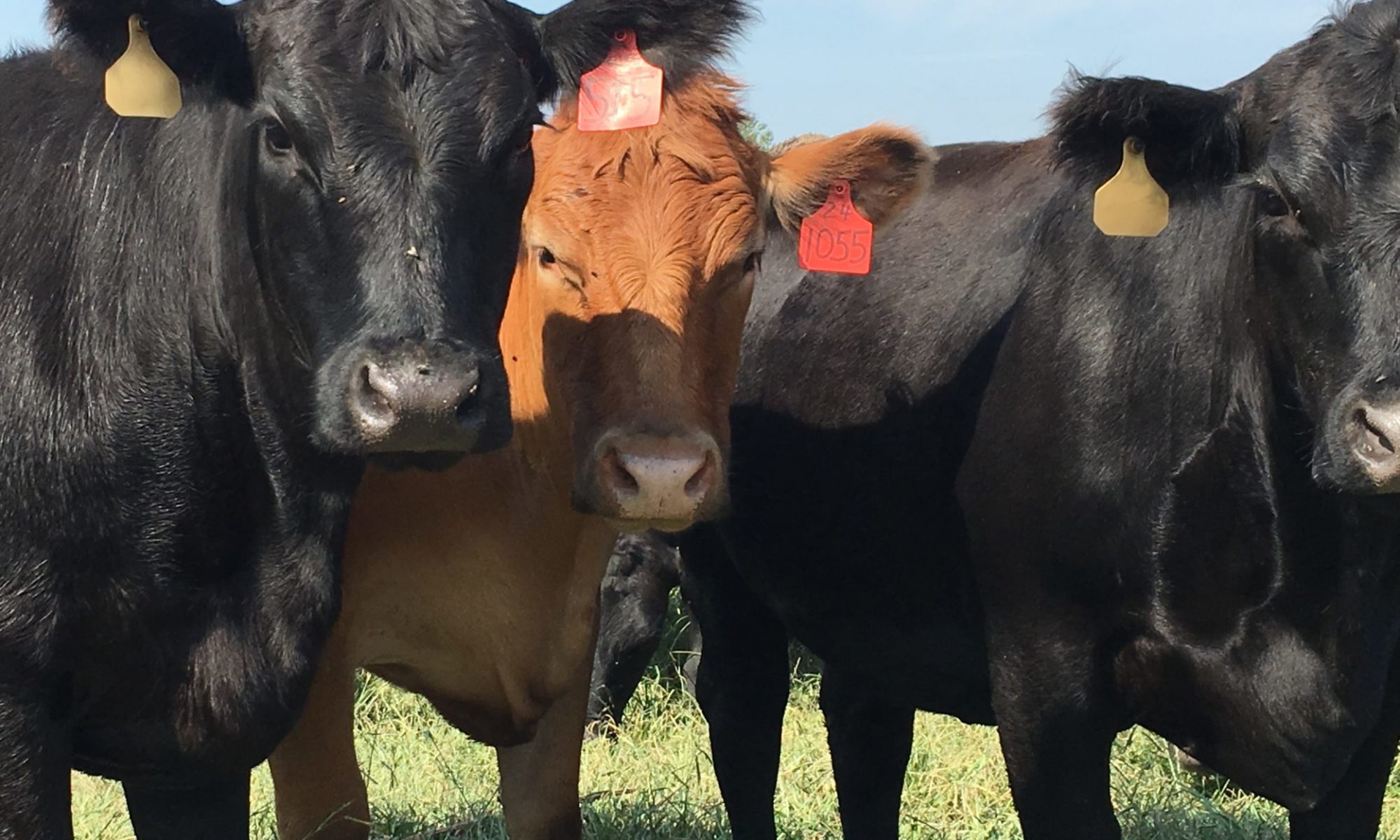

Dr. Troy Rowan
Assistant Professor
UTIA Genomics Center for the Advancement of Agriculture
P: 865-974-3190
There is a quote from the famed British mathematician and physicist Lord Kelvin that states, “If you cannot measure it, you cannot improve it.” I think this quote sums up one of the single biggest challenges that we face in creating selection tools for cattle: If we aren’t measuring traits, we can’t make genetic progress on them. EPDs rely on three main pieces: 1) accurate measurements of a phenotype, 2) large numbers of related individuals in a pedigree or with genomic data, and 3) measurements on multiple animals under shared management conditions (which allows us to separate genetic and management components of a phenotype). Since pieces 2 and 3 are general properties of cattle populations, this means that if we can measure a (heritable) trait, we can make an EPD for it. EPDs allow us to make more rapid genetic progress on traits through increased selection accuracy.
Structural soundness has long been a target of genetic improvement in the beef industry, as it plays an outsized role in cow longevity and animal welfare. Until recently, selection for soundness has been exclusively phenotypic. Producers have had to identify animals that pass the “eye test” and cull cows when foot and leg structure becomes a problem. As with other low-to-moderate heritability traits, genetic progress on soundness through phenotypic selection is especially difficult. Any good cattleman knows that structural soundness is heritable and that choosing an unsound sire can create structural issues in a cow herd for generations. This makes accurate prediction of structural soundness all the more important.
Dairy genetic evaluations have long reported genetic predictions for visually scored “type traits” like foot and leg structure, but beef breeds have lagged behind due to a lack of phenotypic records. As with any trait, putting together a large enough set of measurements is the first step in generating genetic predictions. Recently, researchers and breed associations have started assembling datasets of the size needed to perform genetic evaluations for foot and leg structure.
Scoring and Recommendations
While structural soundness can be observed and measured in multiple ways, the two most common measurements are foot angle and claw set. All breeds with feet and leg scoring initiatives use a 1-9 scale to classify each trait. Foot angle is a measurement of the pastern joint’s angle, the depth of heel, and length of the foot, where a score of 1 is overly steep (approaching a 90-degree angle), and a score of 9 is overly shallow (approaching a 0-degree angle). Claw shape measures the shape and curl of the hoof, where a score of 1 has splayed out, open toes, and a score of 9 has overlapping scissor-like toes. # For both traits, the ideal phenotype is a score of 5 (not too far towards either extreme). An ideal foot angle is a 45-degree angle above the ground, with a sufficient amount of length and heel depth. An ideal claw set is a set of hooves that are symmetrical and appropriately spaced. A visual representation of foot angle and claw set scores (1-9) can be found below, courtesy of the American Angus Association.

In addition to foot angle and claw set, the American Simmental Association, American Gelbvieh Association, and the Red Angus Association of America are collecting rear leg phenotypes. This will use a similar 1-9 scale, where rear legs range from completely straight to entirely sickle-hocked with 5 being the optimal phenotype.
Breed associations suggest initially scoring individuals as yearlings. Foot and leg structure changes as cows age. Over time, the variation in foot scores will increase as some cows maintain their favorable structure, while others begin to regress. As a result, scoring mature cows multiple times over their years in the herd adds useful information beyond the yearling score. All animals in a contemporary group should be scored on the same day by the same scorer for consistency’s sake. Scores should be collected on a hard surface where cows can naturally stand. In the event that there is variation in scores between an animal’s legs, the worst scoring foot should be reported.
Foot angle and claw set are moderately heritable, both with heritabilities of 0.25 in American Angus. These heritabilities are similar to those for weaning or yearling weight. This means that making genetic progress on structural soundness, particularly when using an EPD, is possible for both seedstock and commercial producers.
Breed Association Initiatives and EPDs
Multiple beef breed associations, through industry and academic collaborations, have undertaken foot and/or leg scoring initiatives with the intent of creating new selection tools. The American Simmental Association, American Gelbvieh Association, and the Red Angus Association of America are all actively building databases with the intent of calculating research EPDs for structural soundness phenotypes. As of now, the American Angus Association (AAA) is the lone genetic evaluation reporting foot score EPDs. We can interpret AAA’s reported EPDs as a difference in foot score units (foot angle or claw set), where numbers closer to zero indicate the more favorable intermediate phenotype. * For example, if Bull A’s claw set EPD = 0.5 and Bull B’s = 1.5, the progeny of Bull A would be on average, a full score closer to 5 than progeny from Bull B.
* To date, Angus has observed a relatively small number of 1-4 scores for both foot angle and claw set. This lack of records on the low end of the spectrum means that an EPD is currently only being calculated for scores 5-9. Scores 1-4 aren’t being utilized in the evaluation, so the minimum possible EPD is 0 and lower values indicate more desirable EPDs.
Future work and promise
Breed associations are continuing to build their foot and leg score databases. As with any trait, more phenotypes will enable higher accuracy EPDs.
In addition to foot and leg score EPDs, commercial producers can expect to see breed associations begin to report EPDs on other structural phenotypes. Structural soundness is an economically relevant phenotype. As such, including EPDs for these phenotypes in maternally focused selection indexes will further enhance our ability to identify bulls that will create more profitable daughters. The American Angus Association includes its foot angle and claw set in the $Maternal and $Composite indexes, and other breed associations will likely do the same in the future.
As we strive to improve our cowherds, measuring and predicting novel and economically relevant phenotypes related to cow longevity is crucial. Foot and leg scores are the most recent efforts on this front and provide producers with another tool for selecting sound cows that will stay in the herd longer with fewer issues.